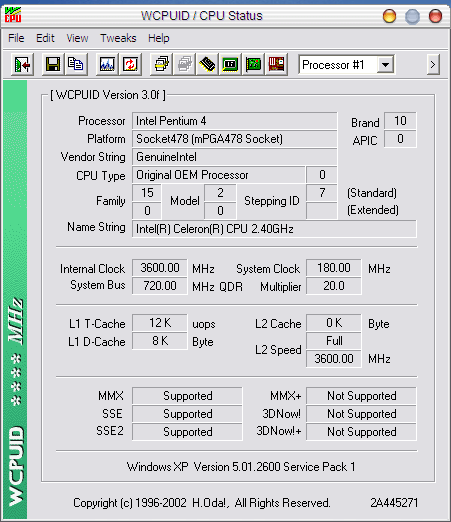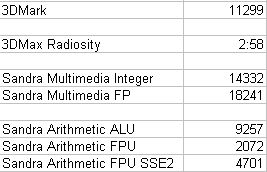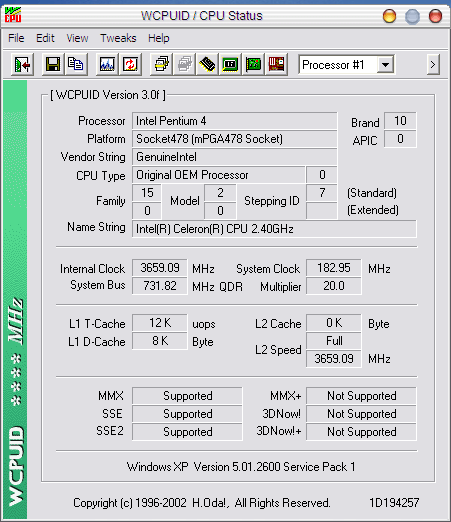ОГЛАВЛЕНИЕ:
- The subject
- Testbed
- Closeup
- Default frequency benchmarks
- Overclocking: disclaimer
- Some serious speed
- Comparison
- Conclusion
First, lets try to get the best this CPU can using the unlocked multiplier. Core voltage has been raised to 1.8V. On 2V system automatically turns off from PSU overload. We used a wiretrick method to give this CPU voltages more then 1.825 later. The rock stable frequency is 3600 Mhz, which is 1,5 times bigger then nominal. On this frequency we could run all tests except 3DSmax that required 1.85 for full stability.

This reminds of legendary Celeron 300A, P3-450, Celeron 600 and the latest Celeron 2GHz that showed similar results. The multiplier was set to 20 and FSB equalled 180 (720 QDR). Memory worked in synchronous mode. Load temp was 42, Idle 38. Estimated Performance Rating, reported by Sandra, was 3965, and approximate power consumption - 141 W.

Maximum frequency that we could screenshot using WCPUID was 3660 Mhz (183x20). Though the stability on this frequency was very poor even on 1.95V. We could only run Sandra's CPU information, which informed us about estimated PR-rating (4025) and power consumption (151W).

The maximum frequency on which PC went through POST was a bit more then 3800 Mhz. Of course Windows didn't load on this frequency.
Then, we tried to simulate the stock Celeron with fixed multiplier. Result was absolutely the same - maximum stable frequency is 3600 MHz as 150x24, so there is nothing to speak about.















